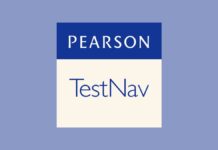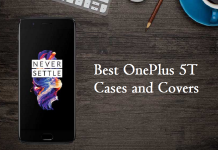Cloud resources are constantly changing. Conventional identity and access management (IAM) systems and procedures are intended to safeguard and regulate access to on-premises applications and infrastructure that are static. These solutions aren’t usually well suited to protecting extremely dynamic, ephemeral cloud infrastructure.
As a result, cloud providers have developed their own IAM tools and paradigms to assist enterprises in authorizing identities to access resources in rapidly changing settings. Despite this, Cloud Security staff face substantial operational, security, and compliance difficulties due to cloud IAM’s volume, diversity, and dynamic nature.
CIEM solutions solve these issues by increasing visibility, detecting, and correcting IAM misconfigurations in single and multi-cloud settings to achieve the leastprivilege access.
What to Look for in an Effective CIEM Solution?
A planned and comprehensive approach to CIEM solutions is necessary. Above all, the best CIEM solution must give visibility into the entities actively accessing the company’s cloud infrastructure.
The next step in the implementation process is to manage risk throughout the cloud infrastructurebased on the analysis results. The most important task in this step is to put the least privilege principle into practice.
In a nutshell, entities have access to only the programs and data required to fulfill their tasks. There should be no more access granted.
Cloud engineers require the tools and visibility to monitor cloud operations continuously. Receiving actionable notifications anytime questionable activity, such as unauthorized access, occurs is part of this.
When certain conditions are met with a CIEM solution, it can be designed to initiate an action automatically. In the case of corporate security rules, automation can be used to enforce them by imposing requirements for multi-factor authentication (MFA), limiting certain permissions to users with a specific job, etc.
Finally, engaging with a top CIEM provider allows businesses to collaborate with specialists to develop an implementation strategy suitable for the company’s cloud security policy.
Moreover, since CIEM is such a relatively new field in cloud computing, best practices for creating a platform are still being created, making expert advice even more vital.
Features to Consider When Looking for the Best CIEM Solutions
A comprehensive set of features and capabilities must be included when looking for the best CIEMsolution.
Following are the most important features of all.
Discovery
CIEM systems should allow for discovering all human and non-human identities, resources, and account activity. They should also assess all policy kinds and support both native and federated identities.
Cloud Correlation
CIEMs are designed to make entitlement management easier in today’s multi-cloud world. This necessitates user-friendly cloud platform support.
Visibility
Understanding complex entitlement relationships requires visibility. A CIEM should include a graph view that maps identities to resources and the ability to query entitlements using natural language and a metrics dashboard that allows an organization to track entitlement consumption, user behavior, and other metrics.
Entitlement Optimization
A CIEM should examine entitlements to see if any are unused, overused, or otherwise ineffective. This can aid in developing a more efficient and effective entitlement strategy.
Entitlement Protection
CIEM systems should provide entitlement detection and correction as part of their entitlement protection. Unusual and potentially risky entitlements should be automatically discovered and remedied through tickets or an automated response.
Threat Detection and Response
A CIEM system should include the UEBA (user and entity behavior analytics). Unusual behaviors should trigger a SIEM warning and be examined automatically to discover potential trends.
Security Posture Analytics
According to Security Posture Analytics, cloud entitlements should be based on industry best practices, standards, and relevant regulations. A CIEM should automatically analyze policies against these needs, generating gap analyses and recommendations.
Entitlement Logging and Reporting
Logging and reporting entitlements are critical for regulatory compliance and incident response. For regulatory reporting, a CIEM should provide complete, consistent logs and templated reports.
What are the Limitationsof CIEM?
CIEM systems can be expected to improve over time as a still-emerging cloud management solution. Nonetheless, any existing drawbacks are well exceeded by the numerous advantages.
When you’re looking for the best CIEM solutions available in the market, it is important to evaluate the vendors and consider a company known for developing comprehensive solutions.
Many incumbent IAM vendors just port over their non-cloud products, obviating the need for the flawless integration required to work in today’s complicated multi-cloud environment.
For a system to be effective, any cloud-based identity and access management system should consider the unique cloud infrastructure architecture of each client. This is especially true in firms with complicated cloud access and authorization policies. Hence, advanced cloud entitlement solutions are required in such organizations.




































 Online casino
Online casino
